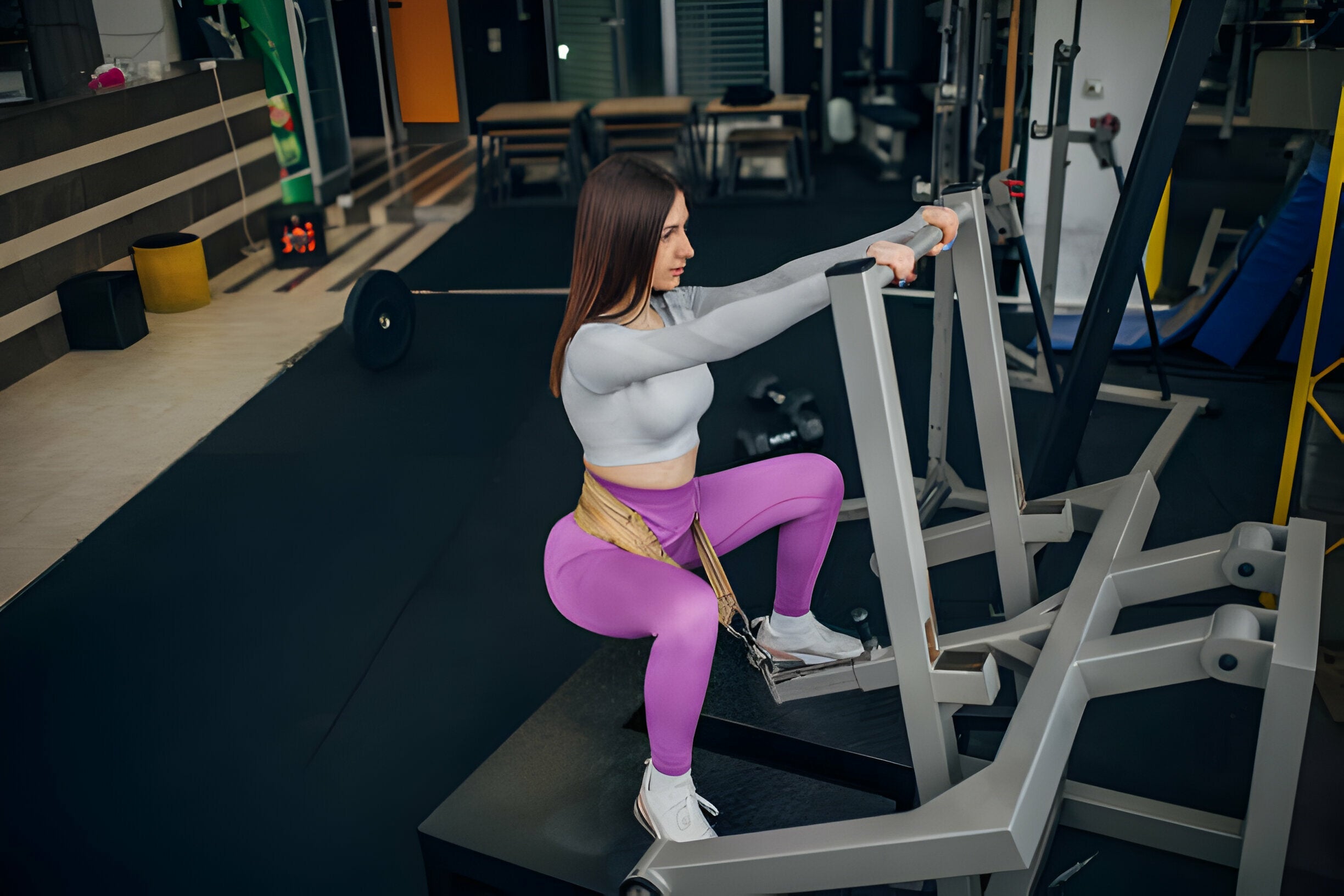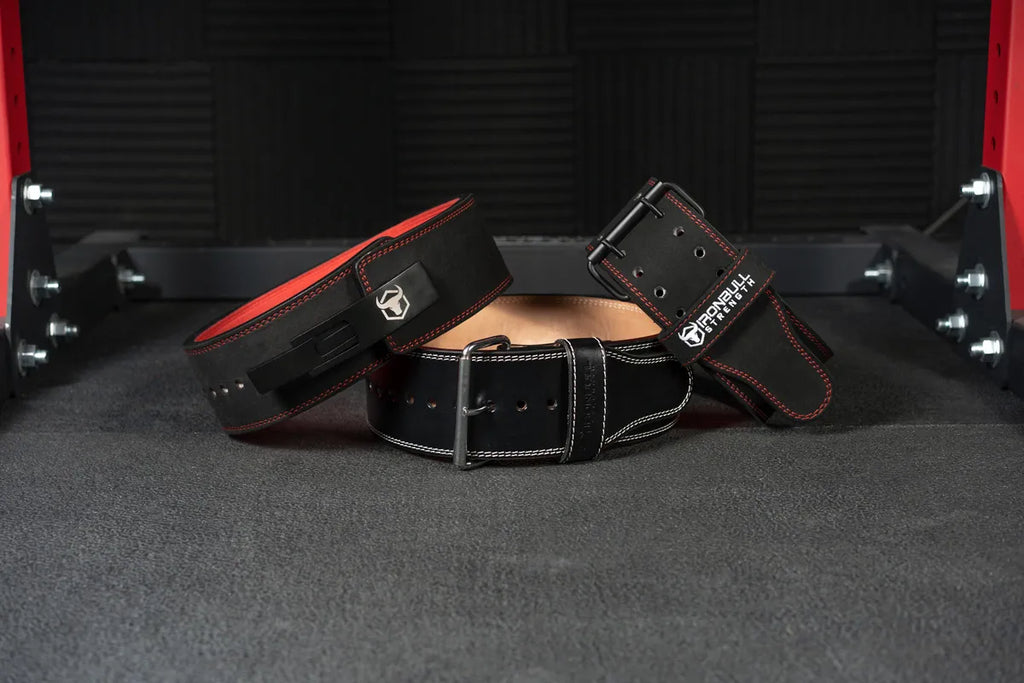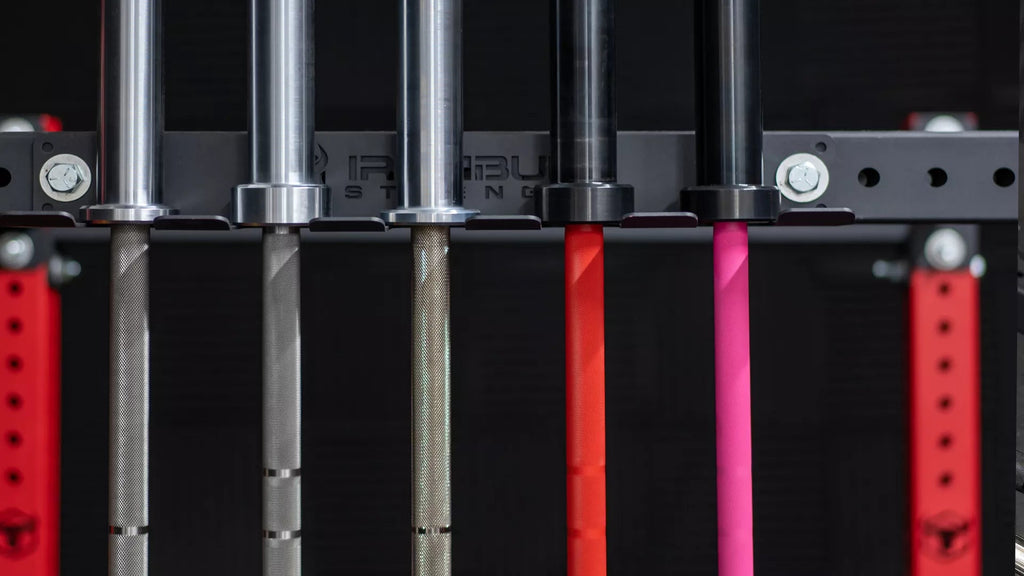How to Use the Belt Squat

One of the hardest days in the gym has to be leg day. The amount of effort that occurs on leg day is tremendous, especially if you try to master the barbell back squat. We are not all built the same, as it takes a brave soul to conquer the back squat. Iconic figures like Tom Platz idolize the squat, mentioning that it’s one of the most important movements in any program.
However, those who are challenged by the back squat might elect to perform variations to this lift, such as the belt squat. But what is the belt squat? The belt squat is an exercise that involves using a belt attached to a cable system or weight system for performing the squat exercise. Unlike traditional squats, the belt squat has the weight supported by a belt around the hips. This variation allows for a more upright posture during the squat movement and can be beneficial for individuals with back issues or those looking to target the legs and glutes while minimizing stress on the spine.
In this article, we will talk about what the belt squat is, its benefits, and how to use the belt squat. It might seem simple, but there are ways to perform the belt squat that could favor the quadriceps, hamstrings, and glutes specifically. Without this information, you could be performing the belt squat incorrectly and not benefiting as much as you possibly could.
Many people can benefit from the belt squat, it just needs to be used in the right context. Let’s dig into this topic and start preparing you for your next successful leg day!
What is the Belt Squat
The belt squat serves as a distinctive alternative to traditional squat workouts that involve placing a barbell on the upper back. The barbell back squat puts vertical compression on the spine as the weight is loaded near the top of the body. The belt squat shifts the weight-bearing focus by utilizing a belt around the hips, decreasing the distances and removing any kind of spinal compression. This modification allows for a more upright posture during the squatting motion, offering a viable solution for individuals who struggle with the traditional squat's impact on their back and posture.
The belt squat doesn’t have to replace the barbell back squat entirely, although it can. The belt squat can be integrated as an accessory exercise to aid in teaching lifters how to enhance their squat mechanics with reduced strain on the upper body. I use the belt squat with clients to teach them how to be more athletic with their hips, and I even use it before deadlift workouts to get the hips firing off properly.
But for those facing challenges such as bad shoulders or limited core strength, the belt squat emerges as a particularly valuable substitute for the barbell back squat. By redistributing the load to the hips, this variation minimizes stress on the upper body while still engaging the lower body effectively.
What Muscles Do the Belt Squat Use
The muscles used during the belt squat are:
- Quadriceps
- Hamstrings
- Gluteus Maximus
Quadriceps
The quadriceps are a group of four muscles located at the front of the thigh. During the belt squat, the quadriceps play a primary role in extending the knee joint as you lift the weight. The upright posture in the belt squat ensures that the quadriceps are actively engaged, contributing to knee extension and overall leg strength.
Hamstrings
The hamstrings are a group of muscles located at the back of the thigh. Engaging the hamstrings is essential in the lowering phase of the belt squat. As you descend, the hamstrings lengthen to control the movement, providing stability and preventing excessive stress on the knee joint.
Gluteus Maximus
The gluteus maximus is the large muscle of the hip joint. The gluteus maximus is heavily involved in hip extension during the upward phase of the belt squat. It plays a crucial role in driving the hips forward, contributing to the overall power and strength of the squat movement.
What are the Benefits of the Belt Squat
The benefits of using the belt squat are:
- Pure lower body recruitment
- Eliminates spinal compression
- Prevents injury
- Optimizes squatting mechanics
Pure Lower Body Recruitment:
The belt squat offers a unique advantage by exclusively targeting the lower body without the need for a barbell on the upper back. This design eliminates concerns related to bracing, core strength, and stability, allowing individuals to focus solely on engaging their lower body.
While some may prefer the challenge of a heavy back squat with their lever belt and wrist wraps for support, the belt squat becomes an optimal choice for those seeking a pure lower body movement or facing limitations that make upper body loading challenging. This simplicity in targeting the lower body makes the belt squat an efficient and accessible option for a diverse range of fitness enthusiasts.
Eliminates Spinal Compression:
One of the distinctive benefits of the belt squat is its ability to eliminate vertical compression on the spine. Unlike traditional squats that place a considerable load on the upper back and spine, the belt squat shifts the weight entirely to the hip joint. This not only alleviates pressure on the spine but also redirects the focus to developing the lower anatomy.
By sparing the spine from vertical compression, the belt squat becomes a valuable tool for athletes looking to prioritize lower body growth while minimizing the potential risks associated with compressive forces on the back.
Injury Prevention:
The belt squat stands out as an injury-preventive exercise due to its unique weight distribution. By bypassing the traditional load on the spine, it reduces the complexity of coordinating multiple muscle groups. This not only makes it more accessible to a broader range of individuals but also minimizes the risk of injuries associated with the intricate muscle interactions required in traditional back squats. The belt squat's focused approach allows users to engage their lower body effectively while maintaining a reduced risk of strain or injury.
Optimized Mechanics:
With the weight centered on the hip joint, the belt squat becomes a powerful tool for optimizing squatting mechanics. This movement helps to teach putting weight across the foot evenly and displacing resistance more effectively on the knee joint and hip joint. This focus on efficient mechanics is particularly beneficial for individuals aiming to refine their squatting technique.
The inclusion of a lever to hold onto provides additional options for customization, allowing users to either lean back for intensified hip engagement or lean forward to activate both the hips and quads more effectively. By offering this adaptability, the belt squat serves as a valuable asset in improving squat mechanics and promoting a safer, more controlled lifting experience.
How to use the Belt Squat
Below is a comprehensive list of steps to use when beginning and executing the belt squat. This is a general guide for performing the belt squat without trying to bias a particular muscle group.
Adjust the Machine:
Start by adjusting the belt squat machine to your height. Ensure that the cable or lever is set to a position where it allows for a full range of motion without any restrictions.
Attach the Belt:
Put on the belt provided by the machine. The belt typically has a chain or attachment point for connecting to the machine. Ensure that the belt is securely fastened around your hips.
Position Yourself Under the Cable:
Stand in the designated area under the cable or lever of the machine. Generally, your feet should be about shoulder-width apart, and your body should be aligned with the machine.
Grab the Handles or Levers:
Depending on the machine, there may be handles or levers available for you to hold onto. Grab these for stability and support during the exercise.
Initiate the Squat:
Lower your body by bending at the knee joint and hip joint, simulating a squatting motion. Maintain an upright posture throughout the movement to engage your lower body effectively.
Descend to Desired Depth:
Lower your body to a depth that is comfortable and within your range of motion. Ensure that your knees are aligned with your feet. Don’t allow your knees to bend past your toes, and make sure your back remains straight. The use of a knee sleeve could be important for this step.
Controlled Ascent and Descent:
Perform the belt squat with controlled movements, avoiding any sudden jerks or bounces. Control both the ascent and descent phases to maximize the effectiveness of the exercise and minimize the risk of injury.
Repeat for Desired Repetitions:
Complete the desired number of repetitions for your workout routine. Pay attention to your form and make adjustments as needed.
Unload the Belt:
Once you've finished your set, carefully unhook the belt from the machine and step away from the cable or lever.
How to Incorporate the Belt Squat in Your Routine
When using the belt squat, it can be incorporated into many programs such as a size program and a strength program. Sometimes, compound movements get this stereotype that they best serve strength-based lifters. However, because the belt squat is a simpler variation of the barbell back squat, it can be used for both strength programs and size programs. Below I will discuss how to use the belt squat for building size and building strength.
Belt Squat for Size
If you want to build size with the belt squat, you want to hit higher reps with lighter weights. The goal of building size is to work towards exhaustion. Sure, lifting heavy can build exhaustion. But that exhaustion also stems from the recruitment of the body’s muscle system and nervous system. With building size, we want to purely fatigue the muscle system and train those muscles to fail.
I would suggest performing the belt squat for 3 sets of 10-12 reps. If you feel like you can handle more weight and continue to overload the belt squat, try working a different tempo and focusing on the downward phase of each movement for 5-6 seconds.
Belt Squat for Strength
If you want to build size with the belt squat, you want to overload the muscle as much as you can within a specific rep range. What controls the amount of weight on the belt squat is the rep range and rest. If you want to build strength, you need fewer reps, more weight, and more rest. This means you can recover for a heavier set of belt squats each working set.
I would suggest performing the belt squat for 3-5 sets of 5-8 reps. This means
Can You Build Size and Strength?
Yes, you can build size and strength at the same time. However, if you want to build the most size or strength, you need to focus on one or the other. You can focus on size tactics during your strength training to help you build more muscle to move more mass. Or you can focus on strength tactics to make your muscles more dense and build muscle. But if you think you are in the middle and want size and strength, I would recommend alternating the intensity of each workout you implement the belt squat.
In one session you can focus on size-building rep ranges, and in the next workout, you focus on strength-building rep ranges. But I would recommend that if you want to be a strength athlete or size athlete, pick the correct stimulus or else you might be doing the wrong volume for the goals you aspire for.










